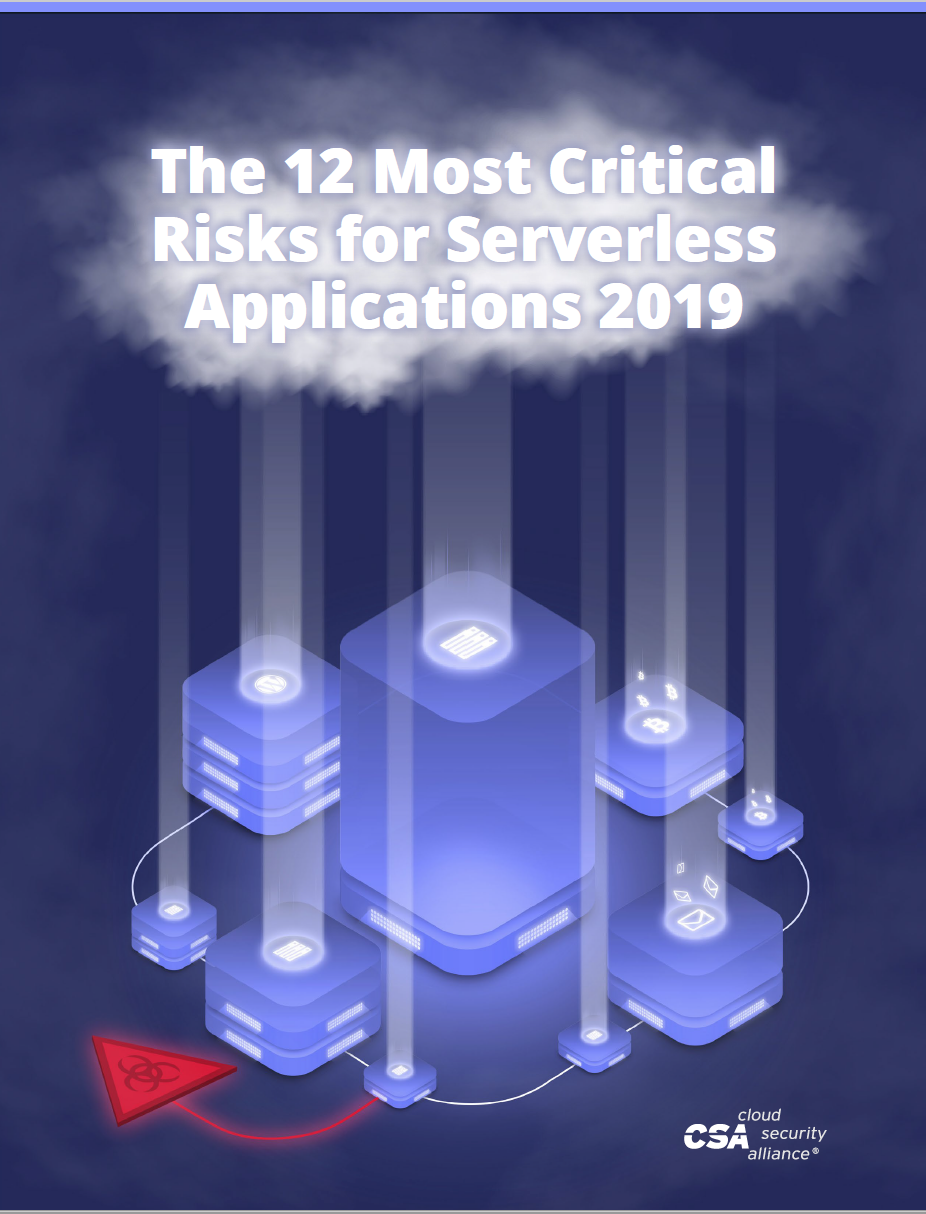The 12 Most Critical Risks for Serverless Applications
Published 02/11/2019
By Sean Heide, CSA Research Analyst and Ory Segal, Israel Chapter Board Member
When building the idea and thought process around implementing a serverless structure for your company, there are a few key risks one must take into account to ensure the architecture is gathering proper controls when speaking to security measures and how to adopt a program that can assist in maintaining the longevity of applications. Though this is a list of 12 highlighted risks that are deemed the most occurring, there should always be the idea that other potential risks need to be treated just the same.
Serverless architectures (also referred to as “FaaS,” or Function as a Service) enable organizations to build and deploy software and services without maintaining or provisioning any physical or virtual servers. Applications made using serverless architectures are suitable for a wide range of services and can scale elastically as cloud workloads grow. As a result of this wide array of off-site application structures, it opens up a string of potential attack surfaces that take advantage of vulnerabilities spanning from the use of multiple APIs and HTTP.
From a software development perspective, organizations adopting serverless architectures can focus instead on core product functionality, rather than the underlying operating system, application server or software runtime environment. By developing applications using serverless architectures, users relieve themselves from the daunting task of continually applying security patches for the underlying operating system and application servers. Instead, these tasks are now the responsibility of the serverless architecture provider. In serverless architectures, the serverless provider is responsible for securing the data center, network, servers, operating systems, and their configurations. However, application logic, code, data, and application-layer configurations still need to be robust—and resilient to attacks. These are the responsibility of application owners.
While the comfort and elegance of serverless architectures is appealing, they are not without their drawbacks. In fact, serverless architectures introduce a new set of issues that must be considered when securing such applications, including increased attack surface, attack surface complexity, inadequate security testing, and traditional security protections such as firewalls.
Serverless application risks by the numbers
Today, many organizations are exploring serverless architectures, or just making their first steps in the serverless world. In order to help them become successful in building robust, secure and reliable applications, the Cloud Security Alliance’s Israel Chapter has drafted the “The 12 Most Critical Risks for Serverless Applications 2019.” This new paper enumerates what top industry practitioners and security researchers with vast experience in application security, cloud and serverless architectures believe to be the current top risks, specific to serverless architectures
Organized in order of risk factor, with SAS-1 being the most critical, the list breaks down as the following:
- SAS-1: Function Event Data Injection
- SAS-2: Broken Authentication
- SAS-3: Insecure Serverless Deployment Configuration
- SAS-4: Over-Privileged Function Permissions & Roles
- SAS-5: Inadequate Function Monitoring and Logging
- SAS-6: Insecure Third-Party Dependencies
- SAS-7: Insecure Application Secrets Storage
- SAS-8: Denial of Service & Financial Resource Exhaustion
- SAS-9: Serverless Business Logic Manipulation
- SAS-10: Improper Exception Handling and Verbose Error Messages
- SAS-11: Obsolete Functions, Cloud Resources and Event Triggers
- SAS-12: Cross-Execution Data Persistency
In developing this security awareness and education guide, researchers pulled information from such sources as freely available serverless projects on GitHub and other open source repositories; automated source code scanning of serverless projects using proprietary algorithms; and data provided by our partners, individual contributors and industry practitioners.
While the document provides information about what are believed to be the most prominent security risks for serverless architectures, it is by no means an exhaustive list. Interested parties should also check back often as this paper will be updated and enhanced based on community input along with research and analysis of the most common serverless architecture risks.
Thanks must also be given to the following contributors, who were involved in the development of this document: Ory Segal, Shaked Zin, Avi Shulman, Alex Casalboni, Andreas N, Ben Kehoe, Benny Bauer, Dan Cornell, David Melamed, Erik Erikson, Izak Mutlu, Jabez Abraham, Mike Davies, Nir Mashkowski, Ohad Bobrov, Orr Weinstein, Peter Sbarski, James Robinson, Marina Segal, Moshe Ferber, Mike McDonald, Jared Short, Jeremy Daly, and Yan Cui.
If you are interested in reading more, you can download the full report here.
Unlock Cloud Security Insights
Subscribe to our newsletter for the latest expert trends and updates
Related Articles:
Why a Serverless Architecture Improves the Security of Cloud-Native Applications
Published: 06/03/2024
Defining 12 CSA Research Topics
Published: 02/09/2024
AI Security and Risk Management
Published: 08/11/2023



.png)



